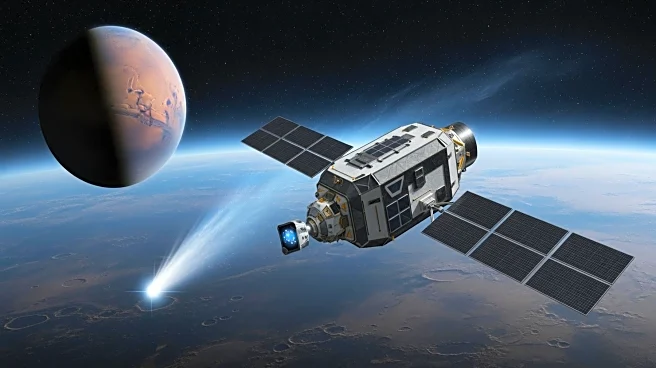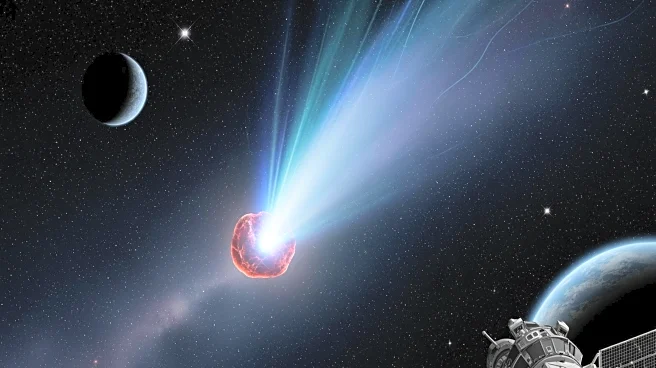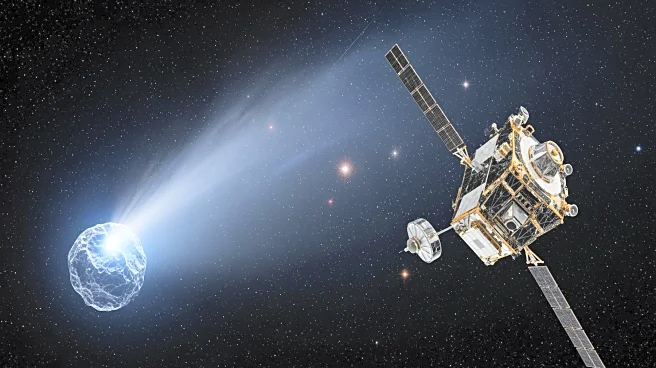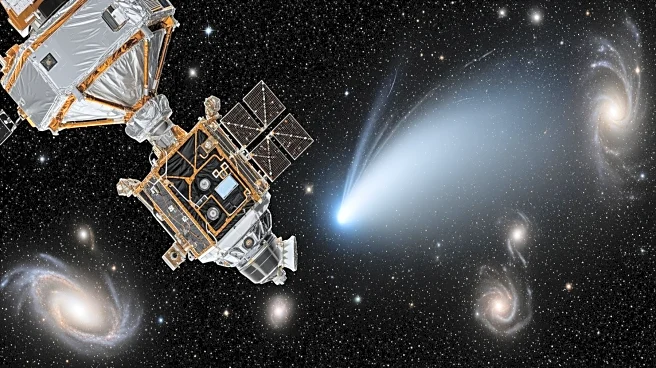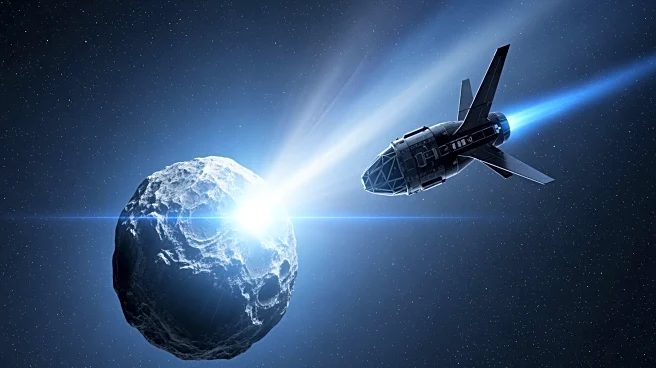What's Happening?
China's Chang'e 6 mission has successfully returned samples from the Moon's far side, specifically from the South Pole–Aitken Basin. Among the 1,935 grams of lunar regolith collected, researchers discovered fragments of CI chondrites, a rare type of meteorite
rich in carbon and water. These meteorites are believed to have formed in the cold outer reaches of the solar system and are carriers of volatile elements such as water and carbon dioxide. The presence of CI chondrites on the Moon suggests that similar asteroids may have struck both the Earth and Moon in the distant past, potentially delivering water and other gases to the inner planets. This discovery supports the theory that Earth's water may have arrived through ancient impacts rather than forming natively.
Why It's Important?
The discovery of CI chondrite fragments on the Moon provides significant insights into the origins of Earth's water. Understanding how water arrived on Earth is crucial for comprehending the planet's habitability and the development of life. The findings suggest that ancient meteorite impacts played a vital role in delivering essential elements to Earth, which could have implications for the study of planetary formation and the search for life on other planets. This research highlights the interconnectedness of celestial bodies and the potential for similar processes to occur elsewhere in the universe, offering a broader perspective on the distribution of life-sustaining resources.
What's Next?
Further analysis of the CI chondrite fragments will likely continue, with scientists using advanced techniques such as mass spectrometry and isotopic analysis to gain deeper insights into their composition and origins. The findings may prompt additional lunar missions to explore other regions of the Moon for similar meteorite samples, potentially uncovering more evidence about the history of water in the solar system. Additionally, this discovery could influence future space exploration strategies, emphasizing the importance of studying celestial bodies to understand Earth's history and the potential for life beyond our planet.
Beyond the Headlines
The preservation of CI chondrites on the Moon, shielded from weathering, offers a unique opportunity to study these rare meteorites in pristine condition. This could lead to advancements in our understanding of the solar system's early history and the chaotic exchange of materials that shaped planetary environments. The findings also underscore the Moon's role as a mirror of Earth's origins, reflecting the complex processes that made our world habitable. As space exploration continues, the Moon may reveal more secrets about the forces that have influenced the development of life on Earth.







